We Still Don't Know When the Mazda CX-5 Diesel Will Arrive in America
The potential for success is limited, but Mazda nevertheless announced in Los Angeles in November 2016 that the revamped 2017 Mazda CX-5 would be available with a 2.2-liter diesel torque monster.
Diesel? 2017? The Volkswagen diesel emissions scandal that broke in late 2015 ended diesel’s run at Volkswagen of America and eventually ended with the withdrawal of diesel engines in Mercedes-Benz USA’s lineup, as well.
Yet diesel persists. General Motors, for example, is selling diesel variants of the Chevrolet Cruze and Equinox and the Equinox’s GMC Terrain sibling. And with Mazda’s decision to sell a 310-lb-ft diesel CX-5, compact crossover shoppers would have three choices.
Mazda said last year that “it will offer the Skyactiv-D 2.2 clean diesel engine in the all-new Mazda CX-5 for North America from the second half of 2017.”
Only half of the second half remains, and MazdaUSA.com still lists the 2017 CX-5 Diesel as a future vehicle. So where’s the 2017 Mazda CX-5 Diesel we were promised?
Polestar Bids 'Farewell' to Volvo Cars
Polestar said goodbye to Volvo Cars over the internet this week. While we like what Polestar does, the social media posting is a slightly sanctimonious. The brand will undoubtedly continue to use Volvo cars as a base for all of its upcoming builds and persist under the same corporate umbrella. It would be a bit like AMG wishing Mercedes-Benz a fond farewell in 2005 and then continuing to use its vehicles.
They’re technically separate entities but both AMG and Polestar exist as a result of the core brand and operate under the watchful eye of a much larger company — Daimler for AMG and Geely for Polestar. The only difference is that the Swedish performance arm is, like Volvo, focusing on electrification for added power while the Germans continue with rip-roaring internal combustion powerplants without even a hint of EV adoption.
Just kidding. Mercedes-AMG’s director of vehicle development, Drummond Jacoy, already confirmed the brand has to “reinvent” itself when it comes to electric cars, promising mild-hybrid applications last Janurary.
Finally, the S205 2018 Mercedes-Benz C-Class Wagon Arrives in Canada
It took some doing.
Mercedes-Benz Canada first showed the wagon version of the fourth-generation C-Class 20 months ago at 2016’s Montreal Auto Show. All-wheel drive, a 2.1-liter diesel with 369 lb-ft of torque, and a profile deserving of all our praise was destined for Canadian showrooms despite Mercedes-Benz USA’s rejection of the wagon.
But there were hiccups. 13 months ago, we asked Mercedes-Benz about the C-Class Wagon’s arrival on this side of the Atlantic and received the following response: “We’re still waiting for certification.”
Mercedes-Benz never got the certification it desired, and diesel engines have disappeared from the automaker’s North American lineup. But by April 2017, we knew Mercedes-Benz had a new plan: the all-wheel drive would remain, but in place of the 2.1-liter diesel there’d be a 2.0-liter turbo C300 with 241 horsepower.
It’s finally here. And it’s still bound for America.
GM Cuts Third Shift at Spring Hill Plant, but Not Because the Cadillac XT5 and GMC Acadia Are Tanking
Layoffs at an assembly plant producing recently redesigned midsize crossovers? Seems an unlikely scenario. But that’s what General Motors is doing in Spring Hill, Tennessee, where the automaker builds the Cadillac XT5 and GMC Acadia.
GM has announced it is cutting the plant’s third shift for an undetermined length of time starting in late November. The move comes just eight months after Spring Hill added hundreds of workers for that very same shift. While it might appear that demand for the vehicles is drying up, the numbers tell another story.
Genesis Motors Boss Pays No Attention to the Kia Stinger
The 2018 Kia Stinger and 2018 Genesis G70 are platform partners, two new sporty and luxurious four-doors from the Hyundai Kia Automotive Group.
The timing of their release is synchronized. They utilize the same engine portfolio. They’ll compete in a similar price bracket. But there are differences. For starters, the styling is markedly different, the kind of difference one expects to find when one car, the Kia, is a hatchback and the other is a sedan. The Kia Stinger works harder to get noticed; the Genesis G70 is more subdued.
But while Hyundai’s Genesis spinoff will need to further differentiate the G70 from a marketing standpoint in order to provide a true luxury brand glow, it’s already been made clear by Albert Biermann, the former BMW chassis guru who’s now head of vehicle testing for Hyundai and Kia, that the cars are very similar. In terms of driving experience, “It’s not so easy maybe as with the styling, but I think we can find good tuning and calibration that set them a little bit apart,” Biermann said earlier this year.
A little bit.
Yet in a conversation with Manfred Fitzgerald, the senior vice president at the Genesis brand, Wards Auto received a strikingly different answer. Asked how the Genesis G70 differs from the Kia Stinger, Fitzgerald says, “You tell me. I don’t look at the Stinger. We’re focusing on something totally different.”
Your teenager calls this #shade.
2018 Nissan Altima Prices Rise Slightly as Nissan Adds Equipment, Prepares a 2019 Challenger for Camry and Accord
Bolstered in its fight against all-new editions of key rivals from Toyota and Honda with the standard fitment of automatic emergency braking and forward collision warning, the 2018 Nissan Altima’s price rises by only $240 compared with the outgoing model.
The base 2018 Nissan Altima 2.5 S rises a few ticks above $24K to $24,025, including destination and handling charges. The Altima continues with a 179-horsepower 2.5-liter four-cylinder linked to a continuously variable transmission.
Given the era in which we live, it’s not surprising to see a more significant price increase for the lone remaining V6 model — the sportier 3.5 SR is dead.
Ford's CEO Might Execute Lower-margin Vehicles to Boost Profits
Ford’s new CEO, Jim Hackett, has been milling around the company trying to get a sense of what the automaker needs to thrive in today’s car market. Conducting a summer-long assessment of the company’s current status and action points, Hackett is setting himself up with a greater understanding of where Ford stands in order to share his vision of the automaker’s future with investors in early October.
However, we already have some sense of what that future entails. Hackett has already spoken with leadership from the United Auto Workers, easing union fears that he might try to clean house and cut jobs. But his reassurance that there probably won’t be massive layoffs under his leadership doesn’t guarantee low-margin automobiles won’t be at risk.
This isn’t entirely down to Hackett’s management style, either. Investors were becoming annoyed with former CEO Mark Fields’ lofty long-term strategy, which featured fewer near-term goals aimed at bolstering profitability. Some analysts expect Hackett to end production of models that aren’t big earners — which includes just about everything that isn’t an SUV, crossover, or pickup truck.
SUVs Are so 2017 - by 2020, Land Rover Will Build a Car
Think along the lines of a Mercedes-Benz S-Class CC. A BMW 7 Series Allroad. A Jaguar XJ Activ. A Lexus LS SUS.
It will be Land Rover’s Road Rover, Autocar reports. And it’s no joke. Targeted at China and California in particular, Land Rover’s Road Rover may appear at the 2019 Los Angeles Auto Show in advance of a 2020 on-sale date. Intended to wage war against the aforementioned full-size luxury cars, the Road Rover is believed to be equipped with a measure of “all-terrain” capability, Autocar says.
While the Range Rover Sport of 2005 was the original move toward more car-like Range Rovers, Land Rover extended its reach with the Range Rover Evoque in 2011 and this summer’s Range Rover Velar. Perhaps we shouldn’t be surprised at the development of a Road Rover.
The brand’s trajectory was obvious.
It's Official: South Carolina Will Build the Next-Gen Volvo S60 and the Volvo XC90
Reports last week that Geely-owned Volvo would double its investment in Berkeley County, South Carolina, were confirmed today by the Swedish automaker. Volvo’s investment rises to $1.1 billion, the employee count is expected to climb to 4,000, and the Charleston plant will build not one but two Volvo models.
Volvo announced its intention to build its South Carolina plant in May 2015. The first vehicles, set to be third-generation Volvo S60s, will begin rolling off the assembly line in the fall of 2018, just one year from now. By 2021, Volvo revealed today, the company will also be assembling its flagship SUV, the XC90, in South Carolina.
Surprised? Of course not.
Further Proof That Hydrogen Cars Are Stupid
Hydrogen is the most abundant element in our universe and hydrogen-powered vehicles produce only a single emission: water. It’s no wonder a handful automakers have touted it as the next-step in “sustainable” transportation, because it looks great upon a cursory examination. But it hasn’t held up under increased scrutiny and numerous manufacturers have been highly critical of fuel cell cars.
Earlier this year, Jaguar Land Rover’s technical design director called hydrogen-powered vehicles a disaster in practical efficiency. Tesla Motors’ Elon Musk went even further, calling the technology “incredibly dumb.” More recently, VW Group also hinted that it thought there wasn’t going to be much of a future for fuel cells. Matthias Mueller’s address at the Frankfurt Auto Show was heavy on electrification and light on hydrogen, with Audi spearheading the technology.
Although, if president of Audi of America Scott Keogh is to be believed, it looks to be a rather dull spear they are using.
Consumers Union Wants Heavy-duty Truck Buyers to Know Their Vehicle's Fuel Economy
Say you’re on the Ram website, perusing a new 2500 heavy-duty pickup. On the specifications page, you scroll down to the fuel efficiency table to see how many Andrew Jacksons you’ll be forking over at the pumps. The verdict? The Ram 2500 has a 32-gallon fuel tank. Thank you for visiting.
Unlike passenger cars and light duty trucks, heavy-duty trucks with a gross vehicle weight above 8,500 pounds aren’t required to flash fuel economy data on a window sticker. Searching the fueleconomy.gov database turns up nothing in the way of information. Now, Consumers Union wants Congress to change that. The consumer advocacy group is calling on the federal government to place fuel economy information on window stickers for the benefit of large truck buyers.
As it awaits a response, the group’s Consumer Reports publication went ahead and tested some heavy-duty pickups.
Faraday Future Officially Ends Its Relationship With Nevada
The honeymoon is over before it even began. The State of Nevada is ending its relationship with automaker Faraday Future, which once promised to build a vast and glorious manufacturing facility within its borders — in exchange for tax incentives.
Eschewing construction of its $1 billion promise in North Las Vegas due to financial woes, Faraday was insistent that it was going to begin construction on a smaller assembly plant before tackling the rest of the build site. According to the company, a bijou factory was to be the first phase of a multi-stage approach intended to bring the FF 91 swiftly to market.
In July, Faraday Future announced it would be placing that project on hold as well, but remained committed to using the Nevada site for long-term vehicle manufacturing. Until then, it said it would shift its business strategy “to position the company as the leader in user-ship personal mobility — a vehicle usage model that reimagines the way users access mobility.” If anyone knows what that gibberish means, we’d love to know. It’s been several months and we still can’t decipher that sentence into useful information.
A Proper Pickup Truck, Not Just a Santa Cruz, Is Being Considered For Production at Hyundai
“We’ve been talking about it for a number of years now,” Hyundai Australia’s chief operating officer, Scott Grant, said at the Genesis G70 global reveal.
No, he’s not talking about the G70, or any Genesis for that matter. He’s not talking about the H-100 pictured above. He’s not talking about the Tucson-based Hyundai Santa Cruz that finally seems destined for production after years of back-and-forth indecision.
Hyundai is now considering a true pickup truck. “We’re confident of having something on the other side of 2020,” Grant says.
Hyundai’s coming for your pickup truck market share, Nissan.
Hiring a New Marketing Agency Isn't a Sign That Mitsubishi's Leaving America
Between its peak in 2002 and the depths of the recession in 2009, Mitsubishi’s U.S. sales plunged 84 percent. Market share plunged from more than 2 percent to less than half of 1 percent. Could the company survive in America?
The loss of product gave observers even more reason to doubt the brand’s staying power. Bigger SUVs such as the Montero and Endeavor disappeared. Mitsubishi’s midsize sedan, the Galant, generated its final sales in early 2014, a decade after the Mitsubishi Diamante departed. The discontinuation of the Eclipse and Lancer Evolution spelled the end of Mitsubishi’s performance bona fides. Then Mitsubishi also ended the Lancer, leaving the Mirage G4 to fight America’s sedan battle.
Meanwhile, Mitsubishi’s plans to bolster its U.S. lineup haven’t always translated to reality. The Outlander plug-in hybrid was initially bound for the U.S. market in 2014 or 2015 — it’s still not here. As for U.S. production, which Mitsubishi’s president Osamu Masuko said in 2013 would not end, the final U.S.-built Mitsubishi rolled off the Illinois line last year.
Despite the heavy load of evidence that would support the belief that Mitsubishi Motors USA was on its death bed, Mitsubishi is on track in 2017 to sell 100,000 vehicles in the U.S. for the first time since 2007, having enjoyed five consecutive years of growth. Settling in for the long haul, Mitsubishi has also signed Mini’s old ad agency, Butler Shine Stern & Partners.
Mercedes-Benz Spending $1 Billion to Build All-electric SUVs in, Where Else, Alabama
Mercedes-Benz is investing $1 billion into its Tuscaloosa, Alabama, assembly operations in order to facilitate the production of its first EQ-branded SUVs in 2020. The investment, timed to roughly coincide with the beginning of Mercedes-Benz ML production in Alabama, is expected to result in the hiring of another 600 employees.
In the near term, Mercedes-Benz has been open with its doubts regarding the profitability of pure electric vehicles. Evidently, the long-term view is different. And it probably doesn’t hurt to pour more money into a U.S. operations hub that accounts for nearly half the vehicles sold by the automaker in America.
Wisely, Hyundai's Genesis Brand Will Not Move Any Further Downmarket
First, Hyundai wanted American consumers to accept the XG300 as a luxury car alternative. If two decades ago such an idea seemed ludicrous, the XG300 — later the XG350 and then the Azera — set the stage for 2018, a year in which a Hyundai luxury spinoff, Genesis, would complete its luxury sedan lineup.
Yes, complete.
Genesis Motors launched in the United States one year ago with the full-size G90 sedan (the Hyundai Equus in a prior generation) and midsize G80 sedan (renamed from the Hyundai Genesis). In September 2017, we saw the production version of the BMW 3 Series-rivalling Genesis G70, set to arrive in showrooms this winter.
Yet while there will be more vehicles from Genesis, including SUVs and quite likely a coupe, Genesis senior vice president Manfred Fitzgerald says the sedan lineup is complete. The fledgling brand will not be moving downmarket into the CLA250/A3/CT200h arena.
Rumors of FCA Seeking Asian Partner Reignite - This Time With Hyundai
Snubbed by both the Germans and the Chinese, Fiat Chrysler Automobiles is continuing its journey to find the automaker that will sweep it off its feet and say, “Let’s build a factory together.” However, if CEO Sergio Marchionne maintains that FCA will be bought by an established automaker, he’s running out of options. The automotive dating pool isn’t particularly deep.
While there was some stirrings of vague Korean interest when news broke of talks between FCA and Chinese automakers, those rumors dissipated quickly. But reports of a possible business deal between Hyundai and the Italian-American company surfaced recently after Great Wall Motors shrugged off its proposed bid for Jeep. FCA later said it had not received any offer from the Chinese manufacturer.
Presumably, Great Wall would have used FCA to supplement its sport utility sales and begin making moves on North America. Another brand that might be interested in bolstering its supply of SUVs is Hyundai — something the South Korean press has been buzzing about all week.
The Infiniti QX50 Goes on Hiatus While Infiniti Kills Off the QX60 Hybrid
As Infiniti prepares to launch the replacement for the Infiniti QX50 next year, quite likely fitted with a unique new turbocharged engine with continuously altered cylinder compression ratios, the first-generation Infiniti QX50 takes a breather for the 2018 model year.
It may not be a well-deserved break — the QX50, formerly known as the EX35 and EX37, accomplished little for the Infiniti brand in America — but it’s a long overdue pause on Infiniti’s compact crossover.
It’s an odd duck, the QX50. Essentially a fast but outdated wagon, frequently sold in rear-wheel-drive form, the QX50 is still widely available prior to its relaunch for MY2019. The Infiniti QX60 Hybrid, on the other hand, is was the fuel-efficient version of Infiniti’s most popular product. At the end of the 2017 model year, the QX60 Hybrid is dead, Motor Authority reports.
What's the Volvo XC40 Getting Into? America's Subcompact Luxury Crossover Segment Is Tiny But Growing Fast
Of the 1.4 million new vehicles sold in the United States of America each month, premium auto brands account for slightly more than one out of every ten new vehicle acquisitions.
More than 55 percent of the vehicles now sold by premium auto brands in America are utility vehicles. Of the nearly 100,000 luxury SUVs/crossovers sold in America each month, 7 percent are subcompacts, vehicles positioned below the compact BMW X3, Mercedes-Benz GLC, Audi Q5, and a variety others.
It’s a sliver of a slice of a chunk of a pie. But that sliver is growing far faster than the overall U.S. auto market, far faster than the U.S. luxury vehicle market, and far faster than the U.S. luxury SUV/crossover market.
Into that four-vehicle premium subcompact crossover segment now jumps the Volvo XC40, timed to roughly coincide with the arrival of the Jaguar E-Pace. It’s a segment that, to date, no automaker has yet found a way to dominate.




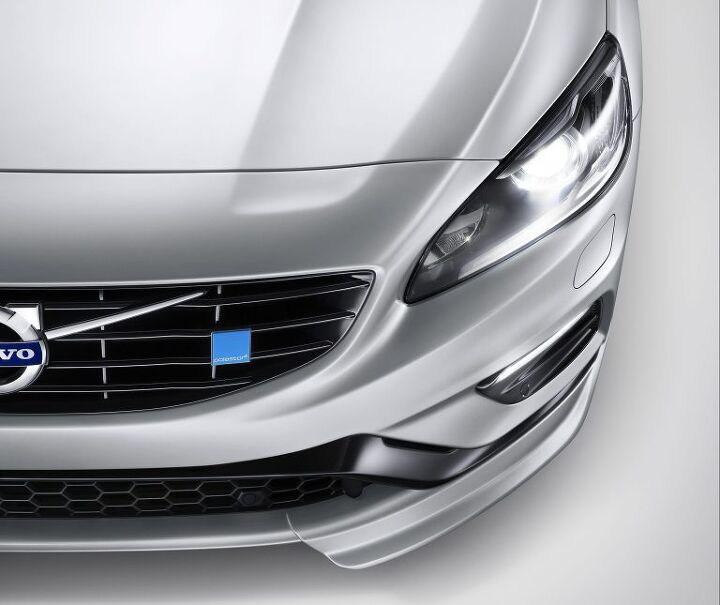

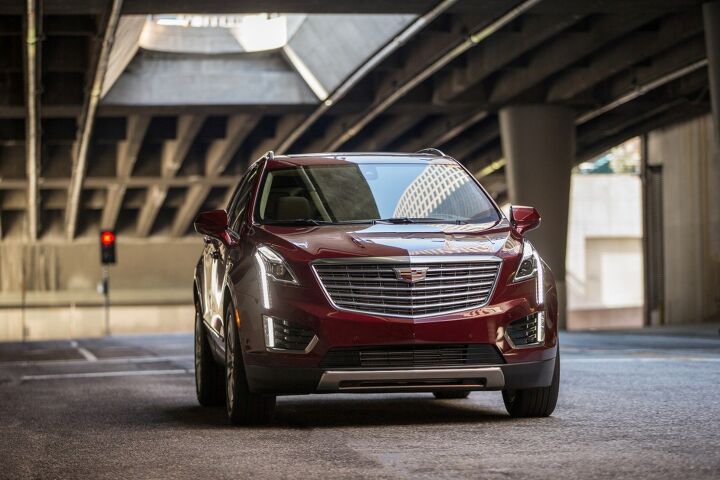

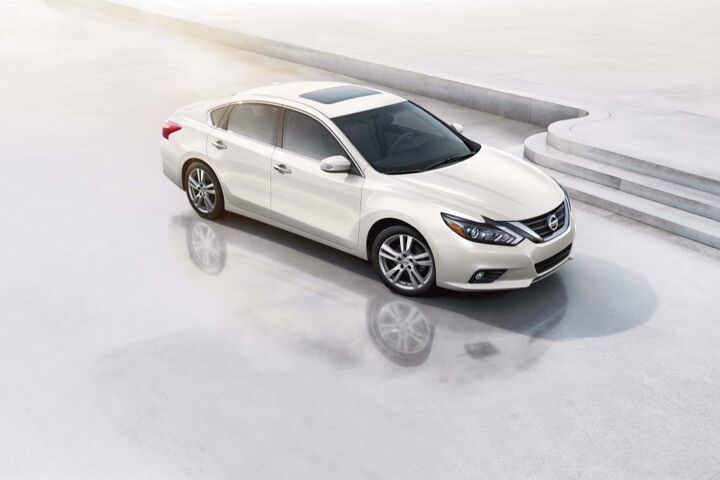




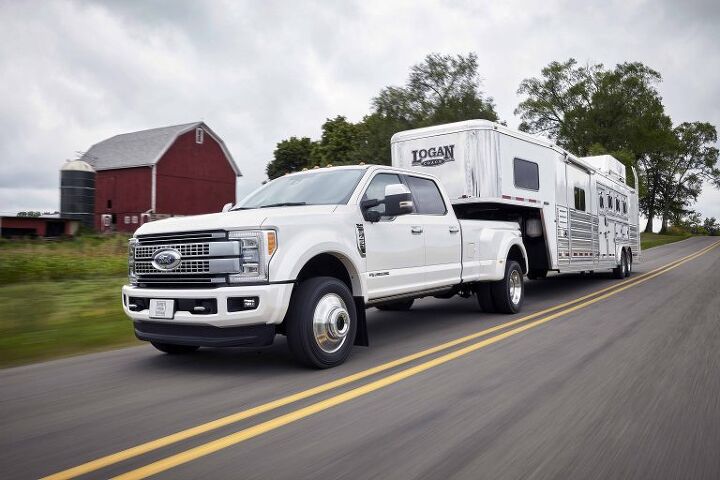

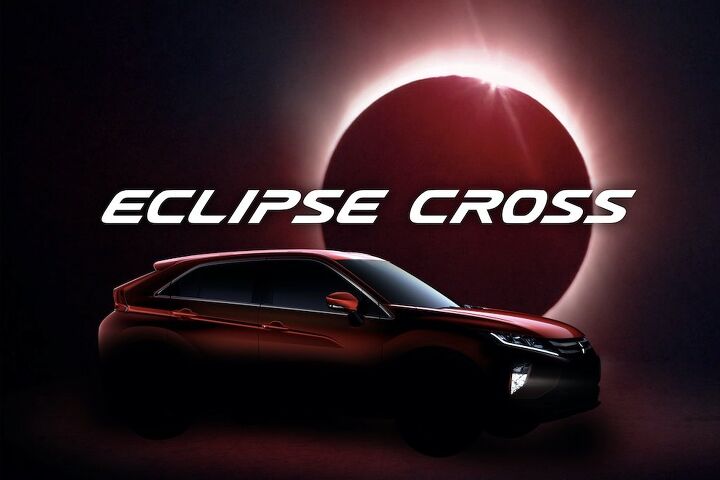
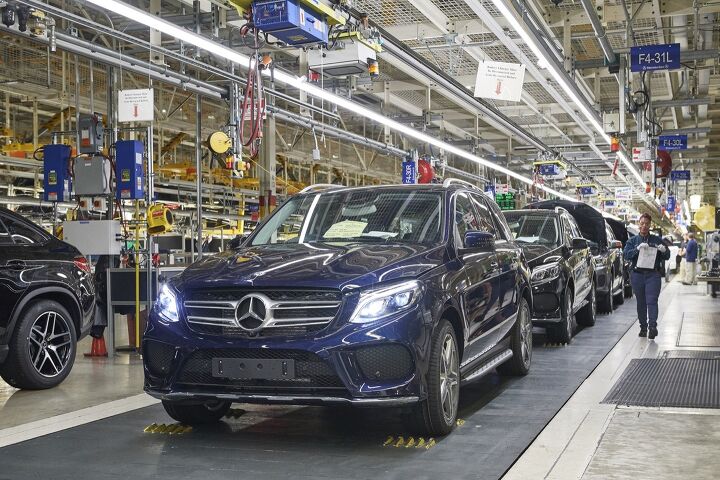
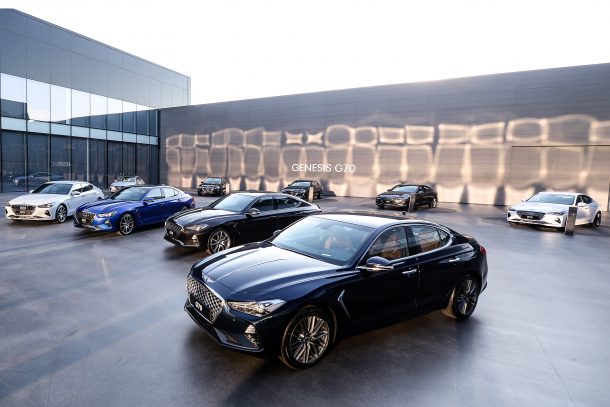
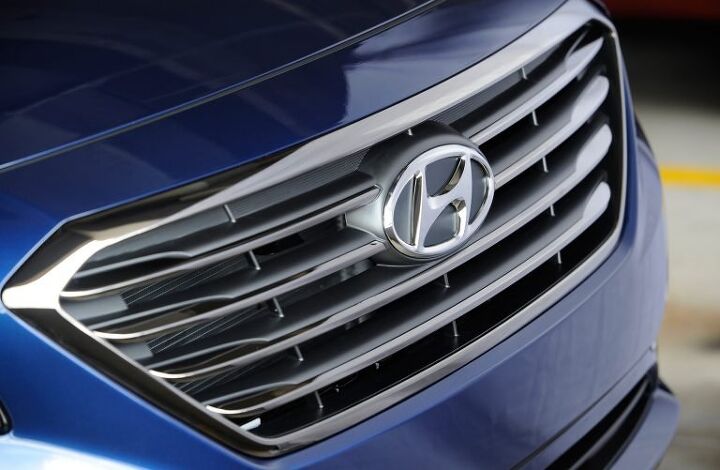

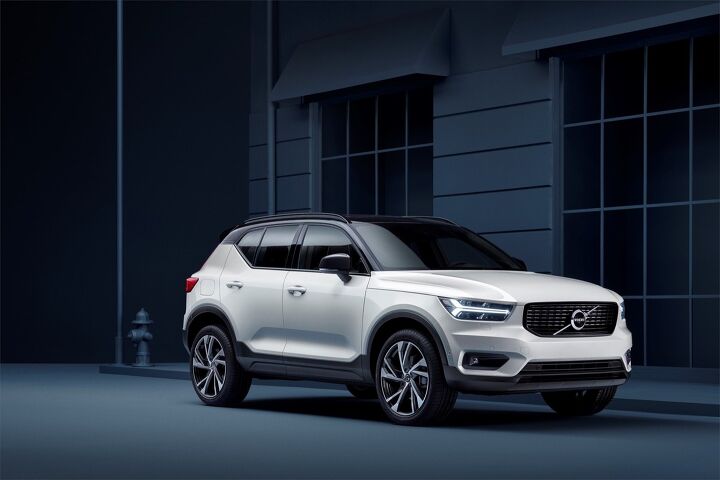












Recent Comments